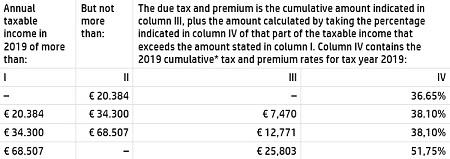Also in the news...
Brilliant Borders: Kenya's Customs goes digital
A new app will save time and money for big businesses and small traders alike, as a longstanding Kenya-UK partnership further improves cross-border trade.
Yorkshire family brewery taps into new export opportunities with Government guarantee
UKEF support helps Wold Top brewery to expand its exports into new markets.
Bond Support Scheme
Find out about the Bond Support Scheme - how it works, its benefits and how to apply.
UK and African business leaders arrive in Togo to create trade and investment deals
The event brings together delegations from ten African nations alongside leading UK companies and investors to advance partnerships that promote economic growth and jobs.
Countering sanctions evasion: guidance for freight and shipping
For freight forwarders, carriers, hauliers, customs intermediaries, postal and express operators, and other companies facilitating the movement of goods.
Personal income tax rates 2019
Personal income tax rates applicable for tax year 2019. Personal income tax rates 2019 for income from (former and/or self-) employment and home ownership (also referred to as “box 1”):

* – premium part in IV respectively: 27.65% / 27.65% / 0% / 0%, tax part in IV respectively: 9% / 10.45% / 38.10% / 51.75%. These rates apply to persons who have not yet reached AOW (State pension) age or the year in which they reach AOW age. Please note that several tax rebates (“heffingskortingen”) may apply, these tax rebates lower the tax and premium payable. These tax rebates have however not been applied in the above table.
Personal income tax rate 2019 for income from substantial share ownership, applicable when owning 5% or more of the shares in a limited company (also referred to as “box 2”): 25% flat tax rate on all earnings following from these shares, such as dividends and capital gain.
Personal income tax rate 2019 for income from equity:30%flat tax rate on (progressive) deemed interest made on equity. In brief equity can be summarized as (worldwide held) assets minus (worldwide held) debts. The point of departure is the value of the equity per beginning (January 1st) of the relevant tax year. Based upon this value the deemed taxable income (benefit from savings and investments) is calculated.
The benefit from savings and investments is set at 0.13% of the part of the basis for savings and investments that belongs to yield class I, plus 5.60% of the part of that basis that belongs to yield class II. The height of the part of the basis for saving and investing that belongs to yield class I or yield class II, is determined on the basis of the following table*:

An example of the above equity tax table: A single individual has an equity of € 130,360 per January 1st 2019. After applying the threshold a taxable equity remains of € 100,000. The actual income made on this equity is not relevant, nor is relevant how this equity has been invested, e.g. as bank savings and/or (partially) invested in stock. Both the taxable interest as well as the kind of investment is fictitious. The first € 71,650 is effectively deemed to have made an interest income of 1.935% (67% x 0.13% plus 33% x 5,6%) is € 1,386. The second part € 100,000 -/- € 71,650 = € 28,350 is effectively deemed to have made an interest income of 4.451% (21% x 0.13% plus 79% x 5,6%) is € 1,261. Total deemed interest is 2,647 x 30% tax =total amount on equity tax is € 794.
The idea behind the two different yield classes is that individuals with more equity are deemed to take more risk by investing in stock, yield class I is the low interest bank savings account and yield class II are the higher interest giving stocks. There is however no counter proof possibility within the law for individuals with a high amount on equity put in low interest bank saving accounts. Based upon case law dealing with double interest fictions, there may be acounter proof possibility in case the actual interest is at least 10% lower than the deemed interest.Court procedures are expected regarding the above explained equity deemed interest income system.Be sure to object on time.

